Do you have a question about the American Standard 4A6H4 and is the answer not in the manual?
Critical warnings regarding live electrical components and R-410A refrigerant hazards.
Guidelines for handling R-410A refrigerant, POE oil, and general system safety.
Advisories on brazing techniques and hot compressor surfaces during installation.
Details the physical dimensions and weight of various outdoor unit models.
Specifies maximum total length and vertical change for refrigerant lines.
Recommendations for unit placement to ensure proper airflow and avoid noise.
Precautions for installing units in areas with snow and freezing temperatures.
Advice for installing units near saltwater environments.
Steps for checking the unit for damage and removing it from the pallet.
Guidelines for installing a stable and level support pad for the outdoor unit.
Table detailing line sizes and service valve connection sizes for different models.
Details the factory charge and when adjustments are necessary.
Procedure to determine the total line length and vertical change.
Importance and method of insulating the vapor refrigerant line.
Precautions for using existing refrigerant lines in retrofit applications.
Ensuring proper routing and isolation to prevent noise and damage.
Detailed steps for preparing and brazing refrigerant lines to service valves.
Steps to pressurize and check the refrigerant lines for leaks using nitrogen.
Instructions for achieving and verifying proper vacuum levels in the system.
Procedure for safely opening the gas service valve after evacuation.
Procedure for safely opening the liquid service valve with caution.
Maximum allowable lengths for low voltage wiring based on gauge.
Wiring diagrams for connecting thermostat, air handler, and outdoor unit.
Details defrost control settings and jumper configurations for most models.
Specific defrost control settings and jumper configurations for the 036D model.
Ensuring correct voltage and compliance with power supply codes.
Requirement to install a separate disconnect switch at the outdoor unit.
Grounding the outdoor unit according to national, state, and local codes.
Sequence of steps to safely power up and begin operating the installed system.
Measuring indoor and outdoor temperatures for accurate system charging.
Procedure for adjusting refrigerant charge using subcooling in warmer conditions.
Method for adjusting refrigerant charge by weight in cooler conditions.
Final inspection checklist and operational verification steps.
A guide to identifying and resolving common system faults and issues.
Critical warnings regarding live electrical components and R-410A refrigerant hazards.
Guidelines for handling R-410A refrigerant, POE oil, and general system safety.
Advisories on brazing techniques and hot compressor surfaces during installation.
Details the physical dimensions and weight of various outdoor unit models.
Specifies maximum total length and vertical change for refrigerant lines.
Recommendations for unit placement to ensure proper airflow and avoid noise.
Precautions for installing units in areas with snow and freezing temperatures.
Advice for installing units near saltwater environments.
Steps for checking the unit for damage and removing it from the pallet.
Guidelines for installing a stable and level support pad for the outdoor unit.
Table detailing line sizes and service valve connection sizes for different models.
Details the factory charge and when adjustments are necessary.
Procedure to determine the total line length and vertical change.
Importance and method of insulating the vapor refrigerant line.
Precautions for using existing refrigerant lines in retrofit applications.
Ensuring proper routing and isolation to prevent noise and damage.
Detailed steps for preparing and brazing refrigerant lines to service valves.
Steps to pressurize and check the refrigerant lines for leaks using nitrogen.
Instructions for achieving and verifying proper vacuum levels in the system.
Procedure for safely opening the gas service valve after evacuation.
Procedure for safely opening the liquid service valve with caution.
Maximum allowable lengths for low voltage wiring based on gauge.
Wiring diagrams for connecting thermostat, air handler, and outdoor unit.
Details defrost control settings and jumper configurations for most models.
Specific defrost control settings and jumper configurations for the 036D model.
Ensuring correct voltage and compliance with power supply codes.
Requirement to install a separate disconnect switch at the outdoor unit.
Grounding the outdoor unit according to national, state, and local codes.
Sequence of steps to safely power up and begin operating the installed system.
Measuring indoor and outdoor temperatures for accurate system charging.
Procedure for adjusting refrigerant charge using subcooling in warmer conditions.
Method for adjusting refrigerant charge by weight in cooler conditions.
Final inspection checklist and operational verification steps.
A guide to identifying and resolving common system faults and issues.
| Brand | American Standard |
|---|---|
| Model | 4A6H4 |
| Category | Heat Pump |
| Language | English |
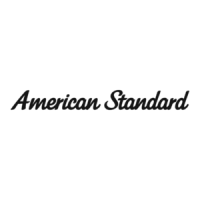
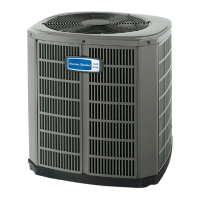
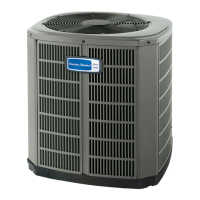




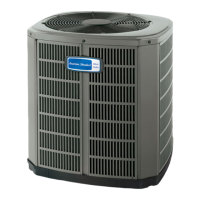
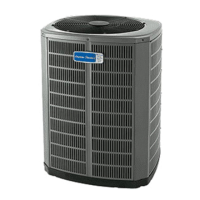
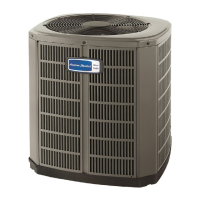
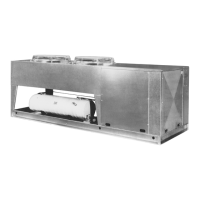

